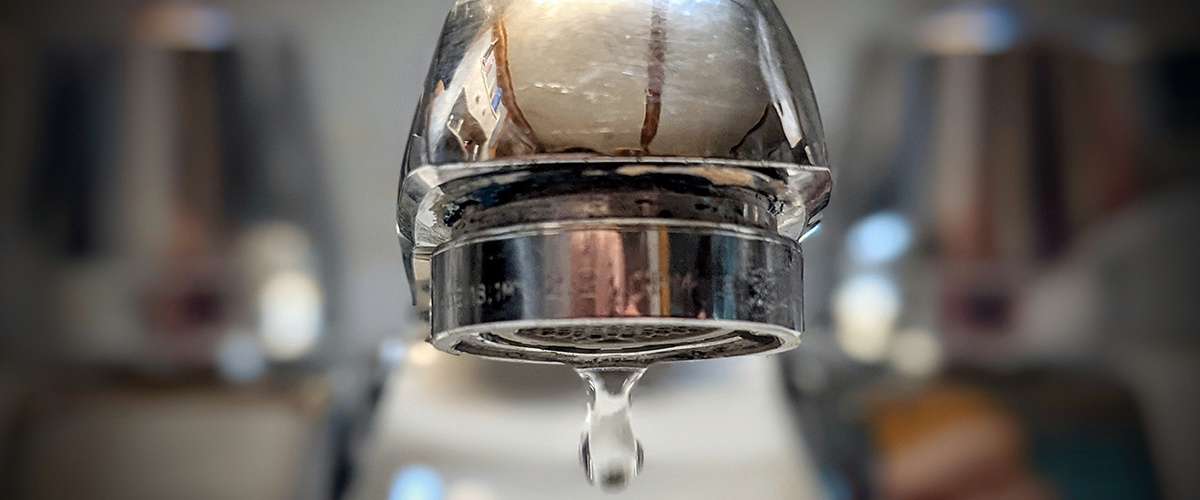What It's Crucial to Fix a Leaking Faucet
What It's Crucial to Fix a Leaking Faucet
Blog Article
We have discovered this post about Why Is It Important To Fix Your Leaking Tap/Faucet? down the page on the net and decided it made sense to write about it with you in this article.

Leaking faucets could look like a minor inconvenience, yet their effect exceeds simply the aggravation of the audio. From drainage to sustaining unnecessary financial prices and health risks, ignoring a trickling faucet can result in various effects. In this post, we'll delve into why it's crucial to resolve this common household concern immediately and efficiently.
Waste of Water
Ecological Influence
Trickling taps contribute dramatically to water waste. According to the Environmental Protection Agency (EPA), a single faucet dripping at one drip per second can lose more than 3,000 gallons of water per year. This not only stress water sources yet also impacts communities and wild animals based on them.
Step-by-Step Overview to Repairing a Dripping Faucet
Devices Required
Before trying to repair a dripping tap, collect the required tools, including an adjustable wrench, screwdrivers, substitute components (such as washing machines or cartridges), and plumber's tape.
Typical Faucet Issues and Their Solutions
Recognize the type of faucet and the specific problem causing the drip. Typical issues include worn-out washers, rusty valve seats, or defective O-rings. Refer to maker guidelines or on the internet tutorials for detailed support on fixings.
Financial Expenses
Enhanced Water Costs
Past the environmental effect, dripping taps can inflate water bills significantly. The built up wastage gradually translates right into higher utility expenses, which might have been avoided with prompt repairs.
Prospective Residential Or Commercial Property Damage
Furthermore, extended leaking can cause harm to components and surfaces surrounding the faucet. Water buildup can trigger discoloration, corrosion, and also architectural problems if left ignored, resulting in added fixing costs.
Wellness Concerns
Mold And Mildew and Mildew Development
The constant visibility of wetness from a trickling tap develops an ideal setting for mold and mildew and mildew growth. These fungis not just jeopardize interior air top quality yet also pose health dangers, particularly for individuals with respiratory conditions or allergic reactions.
Waterborne Diseases
Stationary water in leaking faucets can become a breeding ground for germs and various other pathogens, increasing the threat of waterborne conditions. Pollutants such as Legionella germs flourish in stationary water, potentially causing severe ailments when consumed or inhaled.
Do it yourself vs. Expert Repair service
Benefits and drawbacks of Do It Yourself Repair
While some might try to take care of a leaking tap themselves, do it yourself repair services feature their own set of challenges. Without proper expertise and tools, DIY efforts can worsen the issue or lead to incomplete repair services, prolonging the issue.
Benefits of Hiring a Professional Plumber
Working with a professional plumber makes sure that the underlying cause of the leaking tap is resolved properly. Plumbers possess the know-how and equipment to detect and fix faucet issues successfully, saving time and decreasing the danger of further damages.
Ecological Obligation
Specific Contribution to Preservation
Taking obligation for dealing with dripping faucets straightens with wider efforts toward water conservation and environmental sustainability. Every individual's activities collectively make a significant effect on preserving priceless resources.
Lasting Living Practices
By focusing on prompt repairs and taking on water-saving practices, people add to lasting living practices that benefit both existing and future generations.
Safety nets
Regular Upkeep Tips
To stop dripping taps, perform regular upkeep such as cleaning aerators, inspecting for leaks, and replacing worn-out parts without delay. In addition, think about installing water-saving gadgets or upgrading to much more efficient components.
Significance of Prompt Repair Works
Attending to dripping faucets as soon as they're seen prevents additional water wastefulness and prospective damages, ultimately conserving both water and cash over time.
Effect On Residential Property Worth
Assumption of Well-Maintained Residential Or Commercial Property
Keeping a residential or commercial property in good condition, including dealing with upkeep issues like dripping taps, boosts its perceived worth and charm amongst possible buyers or occupants.
Impact on Resale Worth
Properties with well-maintained plumbing components, including taps, command greater resale worths in the real estate market. Dealing with trickling taps can contribute to a positive impression during property inspections and negotiations.
Conclusion
Resolving a dripping faucet exceeds simple ease; it's a necessary action toward conserving water, minimizing economic prices, and securing health and wellness and building. Whether with do it yourself repair services or expert help, acting to deal with leaking faucets is a small yet impactful method to advertise responsible stewardship of resources and add to a healthier, extra sustainable future.
Most Common Reasons for a Leaky Faucet and How to Stop the Drip
Whether it’s your kitchen faucet leaking or a bathroom faucet leaking, one leaky faucet can waste anywhere from three to 30 gallons of water every single day. If the constant drip-drip-drip doesn’t get your attention, your water bill will. The good news is that, by following a few simple steps, chances are pretty good you can fix the problem yourself.
Why is it dripping?
Before you start taking things apart, let’s break down some of the most common causes of a leaky faucet.
Bad O-ring.
A cartridge is a valve that controls the flow of water into the faucet spout. On cartridge faucets there’s an O-ring—the little disc attached to the stem screw that holds the faucet handle in place. If it’s loose or worn-out, it can cause your sink handle to leak. Of course, the cartridge itself could be worn out. If that’s the case, make sure you replace it with the exact same kind.
Corroded valve seat.
The valve seat connects the faucet and the spout. If the leak seems to be coming from the spout, it might be because a buildup of water sediment has corroded the valve seat.
Worn-out washers or seals.
A leaky spout could be caused by a bad washer that rests against the valve seat. It’s just a matter of time before friction takes its toll. It could also be the wrong size washer or one that’s been installed incorrectly. Water sediments can also corrode inlet and outlet seals.
Water pressure.
If the faucet only drips now and then, or when you turn the handles a certain way, you should probably check your home’s water pressure.
Loose or broken parts.
The adjusting ring and packing nuts in the stream screw can become loose over time, causing your sink handle to leak. Try tightening or replacing the packing nut. If the leak is coming from the pipes underneath the sink, you probably have a broken pipe or fitting. If that’s the case, you should definitely call a plumber.
Know your faucet.
Faucets come in a variety of types. Each one has its own assembly—and its own possible causes of leaks. Learning about the four most common kinds of faucets will help you know how to take them apart and make any repairs.
How to stop a leaky faucet
Fixing that leaky faucet doesn’t have to take a lot of time, money, or expertise. It’s usually a simple matter of replacing a worn-out washer or gasket, a loose O ring, or another part. Chances are really good you can do this yourself if you follow these simple steps.
Shut off the water.
Before you tackle the faucet, cut off the water supply to the sink. There should be one valve for hot and one for cold. Hand-turn them clockwise with your hands till they close. If there are no valves under the sink, head to the basement and shut off the main water supply to the house. Then turn on the faucet until it empties out the water that’s still in the line and you’re ready to start. It’s a good idea to cover the sink drain with a plug or a rag so you don’t lose any small pieces and parts while you’re working.

Do you like reading about 4 Common Reasons for a Leaky Faucet? Write a review directly below. We would be delighted to find out your suggestions about this post. In hopes that you come back again soon. Are you aware of somebody else who is fascinated with the niche? Be sure promote it. Thanks for going through it.
Report this page